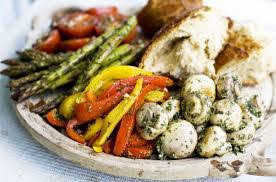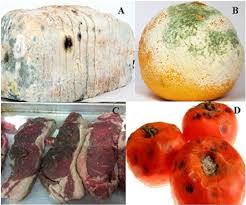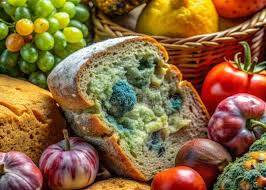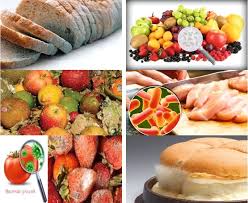All agricultural and aquatic products undergo varying degrees of deterioration after harvest and during storage, leading to losses in nutritional value, safety, and aesthetic appeal (color, texture, flavor). Fruits, vegetables, and root crops are especially perishable.
If proper care is not taken during harvesting, handling, and transportation, they decay quickly and become unfit for human consumption. Estimates of production losses in developing countries are difficult to assess, but some authorities suggest that sweet potatoes, plantain, tomatoes, bananas, and citrus fruits experience losses as high as 50% of what is grown. Reducing these losses, particularly if it can be done economically, would significantly benefit both growers and consumers.
All fruits, vegetables, and root crops are living plant parts containing 65 to 95 percent water and continue their life processes after harvest. The post-harvest life of produce depends on the rate at which stored food reserves are used and the rate of water loss. These changes not only reduce quality but also increase susceptibility to contamination by microorganisms.
While these microorganisms may be of public health significance, their impact on human health is often minimal, as physiological deterioration usually renders the product unfit for consumption. However, the potential growth of harmful microorganisms, coupled with quality loss, makes it important to understand both the factors involved in deterioration and the steps necessary to maintain optimal product quality.
Read Also: 12 Medicinal Health Benefits Of Renealmia alpinia (Pink cone ginger)
Factors Influencing Food Deterioration

Food is naturally prone to deterioration either through chemical or microbial processes. The shelf life of food is influenced by factors such as:
- The product’s nature (nutritional composition),
- Packaging quality, and
- Storage temperature.
To optimize the storage quality and extend the shelf life of fresh and value-added products, it is essential to understand the role of the following factors in food spoilage:
- Chemical components in the food,
- Environmental conditions,
- Initial microbial load, and
- Nature and type of microorganisms present.
Causes of Post-Harvest Losses and Poor Quality in Fruits and Vegetables
Deterioration, or undesirable quality changes, may result from biological, microbiological, biochemical/physiological, or physical changes. The causes of deterioration often promote conditions that lead to quality losses.
These factors usually stem from inadequate product handling training, poor or non-existent storage structures, unsuitable or inadequate handling and storage technologies, ineffective quality control, and extreme environmental conditions. Additionally, time plays a critical role in the spoilage of produce.
Causes of Deterioration and Spoilage

Foods are frequently classified by their stability as non-perishable, semi-perishable, and perishable. Hermetically sealed and heat-processed (e.g., canned) foods are generally considered non-perishable. However, spoilage can occur if recontamination happens post-processing, such as through faulty can seams or excessive corrosion, leading to internal gas formation and can bursting.
Spoilage may also occur when canned food is stored at unusually high temperatures, allowing thermophilic spore-forming bacteria to multiply, resulting in changes like flat sour spoilage.
Low-moisture content foods, such as dried fruits and vegetables, are classified as semi-perishable. Frozen foods, though inherently perishable, may be classified as semi-perishable if stored at proper freezer temperatures.
Most foods (e.g., meat, fish, milk, eggs, and most fresh fruits and vegetables) are classified as perishable unless processed in some way. Often, the only processing these foods receive is packaging and storage under controlled temperature conditions.
Chemical Factors Leading to Deterioration
Chemical deterioration can occur through enzymatic activity or interactions among the macronutrients in food products. Enzymes, naturally present in plant tissues, catalyze important biochemical reactions. Some enzyme-catalyzed reactions are beneficial, while others lead to quality deterioration. Examples of such reactions include:
- Post-harvest senescence and spoilage of fruits and vegetables,
- Oxidation of phenolic substances by phenolase, leading to browning,
- Sugar-to-starch conversion in plant tissues by amylases,
- Post-harvest demethylation of pectic substances, leading to softening during ripening, and
- Development of off-flavors due to lipid breakdown.
Bruising, ripening, cutting, temperature, and co-factors (e.g., Fe and Mg) can increase the rate of enzymatic degradation.
Physical Factors Affecting Food Deterioration
A major undesirable physical change in food powders is moisture absorption due to insufficient packaging, leading to caking. This can happen either because of poor packaging material selection or failure of the package’s integrity during storage. Generally, moisture absorption increases cohesiveness.
Anti-caking agents, often fine powders of inert substances, are added to improve flowability by inhibiting caking. However, these agents become ineffective at higher water activities (above 0.45), where caking accelerates.
Read Also: 16 Medicinal Health Benefits Of Scleromitrion diffusum (Spreading Diamond Flower)
Biological Factors in Food Spoilage

Pests and microorganisms can lead to both quality deterioration and safety hazards. Insects, rodents, and birds often damage the surfaces of fruits and vegetables, making them more susceptible to microbial invasion. Proper sanitation in produce handling and storage areas is the most effective method of controlling pests.
Microorganisms, including bacteria, fungi, yeasts, and molds, play a significant role in food spoilage. Spoilage microorganisms, such as bacteria and fungi, can cause softening, off-color, and off-flavor in produce. Pathogenic microorganisms, if present in sufficient quantities, may cause illness in consumers.
Factors influencing the type of microorganisms responsible for spoilage include the food’s intrinsic parameters (e.g., pH, water activity, nutrient content, and antimicrobial constituents) and the extrinsic parameters of the storage environment (e.g., temperature, humidity, and gas composition).
Insect Pests in Food Spoilage
Warm, humid environments promote insect growth. Most insects do not breed at temperatures above 35°C or below 10°C and require food with a moisture content greater than 11%. Foods most vulnerable to insect attacks include cereal grains, legumes, dairy products, dried fruits, dried meats, and nuts. Insect infestations can lead to significant economic loss due to unsaleable products, reduced nutritional quality, and accelerated decay.
Insect penetration through packaging materials is a significant problem. Resistance to insect penetration varies with material thickness, resin type, and packaging structure. Thicker and tightly fitted films provide better protection against insects.
Rodent Infestations and Food Deterioration
Rodents, such as rats and mice, pose both health and economic threats to food supplies. They carry disease-causing organisms and gnaw through various materials to reach food sources. Proper sanitation in food processing and storage areas is the most effective method of controlling rodent populations, as most packaging materials can be breached by rodents, with the exception of metal and glass containers.
Effects of Deterioration on Food Quality
Chemical, physical, and biological changes during handling, processing, and storage lead to the deterioration of both sensory and nutritional quality in foods.
1. Sensory Quality: Lipid oxidation, non-enzymatic browning (Maillard reaction), and color changes, particularly in chlorophylls, anthocyanins, and carotenoids, are the primary factors affecting the sensory quality of stored foods.
2. Nutritional Quality: Factors affecting nutrient degradation include light, oxygen concentration, temperature, and water activity. Ascorbic acid, the most sensitive vitamin in foods, is particularly affected by packaging material and storage conditions.
Food deterioration results from enzymatic activity, microbial growth, and environmental factors. A combination of proper handling, storage, and packaging materials is essential in minimizing deterioration and extending the shelf life of food products.
Do you have any questions, suggestions, or contributions? If so, please feel free to use the comment box below to share your thoughts. We also encourage you to kindly share this information with others who might benefit from it. Since we can’t reach everyone at once, we truly appreciate your help in spreading the word. Thank you so much for your support and for sharing!
Read Also: Complete Composting Guide for Beginners

